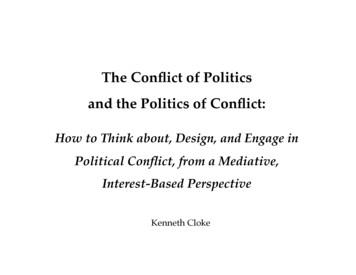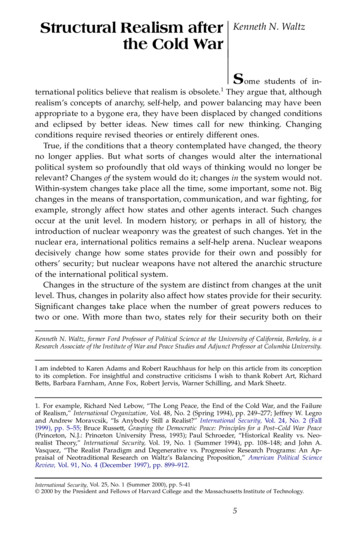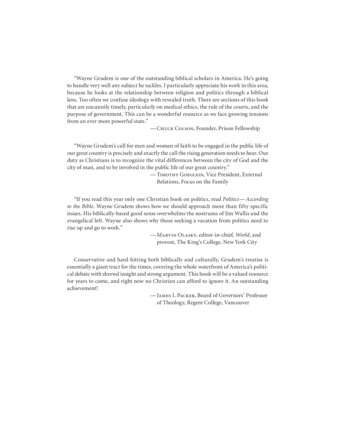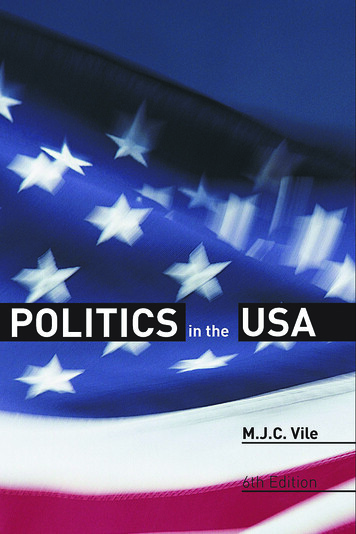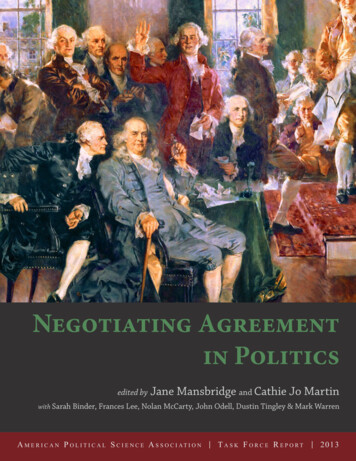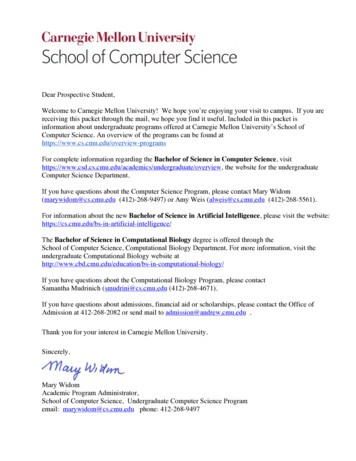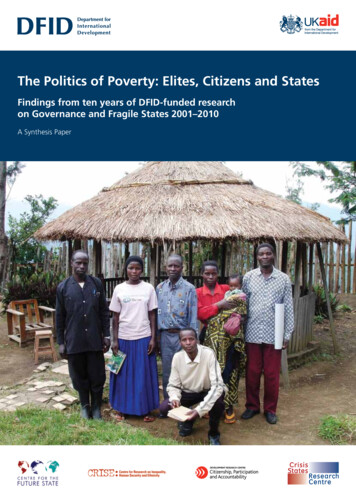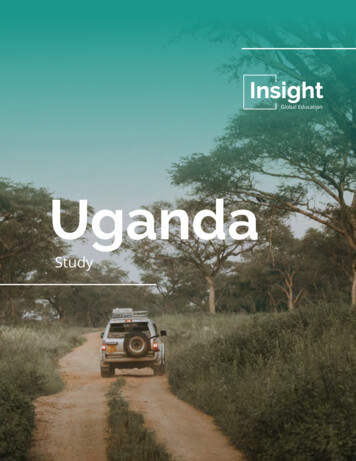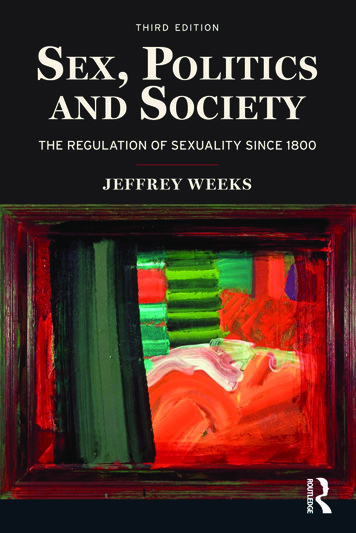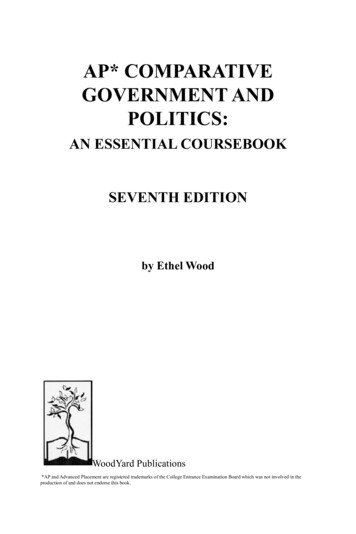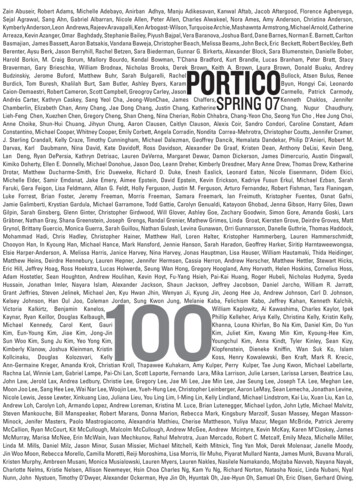
Transcription
Zain Abuseir, Robert Adams, Michelle Adebayo, Anirban Adhya, Manju Adikesavan, Kanwal Aftab, Jacob Aftergood, Florence Agbenyega,Sejal Agrawal, Sang Ahn, Gabriel Albarran, Nicole Allen, Peter Allen, Charles Alwakeel, Nora Ames, Amy Anderson, Christina Anderson,Kymberly Anderson, Leon Andrews, Rajeev Aravapalli, Ken Arbogast-Wilson, Turquoise Archie, Mashawnta Armstrong, Michael Arnold, CatherineArreaza, Kevin Azanger, Omar Baghdady, Stephanie Bailey, Piyush Bajpal, Vera Baranova, Joshua Bard, Dane Barnes, Norman E. Barnett, CarltonBasmajian, James Bassett, Aaron Batsakis, Vandana Baweja, Christopher Beach, Melissa Beams, John Beck, Eric Beckett, Robert Beckley, BethBerenter, Aysu Berk, Jason Berryhill, Rachel Betzen, Sara Biederman, Gunnar G. Birkerts, Alexander Block, Sara Blumenstein, Danielle Bober,Harold Borkin, M. Craig Borum, Mallory Bourdo, Kendal Bowman, T’Chana Bradford, Kurt Brandle, Lucas Branham, Peter Bratt, StacyBraverman, Gary Brieschke, William Brodnax, Nicholas Brooks, Derek Brown, Keith A. Brown, Laura Brown, Donald Buaku, AndreyBudzinskiy, Jerome Buford, Matthew Buhr, Sarah Bulgarelli, RachelBullock, Atsen Bulus, ReneeBurdick, Tom Buresh, Khalilah Burt, Sam Butler, Ashley Byers, KaramByun, Hongyi Cai, LeonardoCaion-Demaestri, Robert Cameron, Scott Campbell, Greogroy Carley, JasonCarmello, Patrick Carmody,Andrés Carter, Kathryn Caskey, Sang Yeol Cha, Jeong-WonChae, James Chaffers,Kenneth Chaklos, JenniferChamberlin, Elizabeth Chan, Anny Chang, Jae Dong Chang, Justin Chang, KatherineChang, Nupur Chaudhury,Lieh-Feng Chen, Xuezhen Chen, Gregory Cheng, Shan Cheng, Nina Cherian, Robin Chhabra, Chang-Yeon Cho, Seong Yun Cho , Hee Jung Choi,Anne Choike, Shun-Hui Chuang, Jihyun Chung, Aaron Clausen, Caitlyn Clauson, Alexis Coir, Sandro Condori, Caroline Constant, AdamConstantino, Michael Cooper, Whitney Cooper, Emily Corbett, Angela Corradin, Nondita Correa-Mehrotra, Christopher Coutts, Jennifer Cramer,J. Sterling Crandall, Kelly Craze, Timothy Cunningham, Michael Dalezman, Geoffrey Dancik, Hemalata Dandekar, Philip D’Anieri, Robert M.Darvas, Karl Daubmann, Nina David, Kate Davidoff, Ross Davidson, Alexander De Graaf, Kristen Dean, Anthony DeLisi, Kevin Deng,Lan Deng, Ryan DePersia, Kathryn Detrisac, Lauren DeVerna, Margaret Dewar, Damon Dickerson, James Dimercurio, Austin Dingwall,Kimiko Doherty, Ellen E. Donnelly, Michael Donohue, Jason Doo, Leann Dreher, Kimberly Dresdner, Mary Anne Drew, Thomas Drew, KatherineDrotar, Matthew Ducharme-Smith, Eric Dueweke, Richard D. Duke, Enesh Easlick, Leonard Eaton, Nicole Eisenmann, Didem Ekici,Michelle Elder, Samir Emdanat, Jake Emery, Aimee Epstein, David Epstein, Kevin Erickson, Kadriye Fusun Erkul, Michael Ezban, SarahFaruki, Gera Feigon, Lisa Feldmann, Allan G. Feldt, Holly Ferguson, Justin M. Ferguson, Arturo Fernandez, Robert Fishman, Tara Flaningam,Luke Forrest, Brian Foster, Jeremy Freeman, Morris Freeman, Samara Freemark, Ian Freimuth, Kristopher Fuentes, Osnat Gafni,Jamie Galimberti, Krystian Gardula, Michael Garramone, Todd Gattie, Carolyn Genualdi, Katayoon Ghobad, Jenna Gibson, Harry Giles, DawnGilpin, Sarah Ginsberg, Glenn Ginter, Christopher Girdwood, Will Glover, Ashley Goe, Zachary Goodwin, Simon Gore, Amanda Goski, LarsGräbner, Nathan Gray, Shana Greenstein, Joseph Grengs, Randal Grenier, Mathew Grimes, Linda Groat, Kiersten Grove, Deirdre Groves, MattGrynol, Brittany Guercio, Monica Guerra, Sarah Guillou, Nathan Gulash, Levina Gunawan, Orri Gunnarsson, Danelle Guthrie, Thomas Haddock,Mohammad Hadi, Chris Hadley, Christopher Hainer, Matthew Hall, Loren Halter, Kristopher Hammerberg, Lauren Hammerschmidt,Chooyon Han, In Kyoung Han, Michael Hance, Mark Hansford, Jennie Hanson, Sarah Haradon, Geoffrey Harker, Siritip Harntaweewongsa,Elsie Harper-Anderson, A. Melissa Harris, Janice Harvey, Nina Harvey, Jonas Hauptman, Lisa Hauser, William Hautamaki, Thida Heidinger,Matthew Heins, Deirdre Hennebury, Lauren Hepner, Jennifer Hermsen, Cassia Herron, Andrew Herscher, Matthew Hettler, Stewart Hicks,Eric Hill, Jeffrey Hoag, Ross Hoekstra, Lucas Holwerda, Seung Wan Hong, Gregory Hoogland, Amy Horvath, Helen Hoskins, Cornelius Hoss,Adam Hostetler, Sean Houghton, Andrew Houlihan, Kevin Hoyt, Fu-Yang Hsieh, Pai-Kai Huang, Roger Hubeli, Nicholas Hudyma, SyedaHussain, Jonathan Imler, Nayara Islam, Alexander Jackson, Shaun Jackson, Jeffrey Jacobson, Daniel Jarcho, William R. Jarratt,Grant Jeffries, Steven Jelinek, Michael Jen, Kyu Hwan Jhin, Wenyan Ji, Kyung Jin, Jeong Hee Jo, Andrew Johnson, Carl D. Johnson,Kelsey Johnson, Han Oul Joo, Coleman Jordan, Sung Kwon Jung, Melanie Kaba, Felichism Kabo, Jeffrey Kahan, Kenneth Kalchik,Victoria Kalkirtz, Benjamin Kanelos,William Kaplowitz, Ai Kawashima, Charles Kaylor, IpekKaynar, Ryan Keillor, Douglas Kelbaugh,Phillip Kelleher, Ariya Kelly, Christina Kelly, Kristin Kelly,Michael Kennedy, Carol Kent, GauriKhanna, Louna Khirfan, Bo Na Kim, Daniel Kim, Do YunKim, Eun-Young Kim, Jiae Kim, Jong-JinKim, Juliet Kim, Kwang Min Kim, Kyoung-Hee Kim,Sun Woo Kim, Sung Ju Kim, Yeo Yong Kim,Youngchul Kim, Anna Kindt, Tyler Kinley, Sean Kizy,Kimberly Klanow, Joshua Kleinman, KristinKlopfenstein, Dieneke Kniffin, Wan Suk Ko, IslamKollcinaku, Douglas Kolozsvari, KellyKoss, Henry Kowalewski, Ben Kraft, Mark R. Krecic,Ann-Germaine Kreger, Amanda Krok, Christian Kroll, Thapawee Kuhakarn, Amy Kulper, Perry Kulper, Tae Jung Kwon, Michael Labellarte,Rachna Lal, Winnie Lam, Gabriel Lampe, Pai-Chi Lan, Scott Laporte, Fernando Lara, Mika Larrison, Julie Larsen, Larissa Larsen, Beatrice Lau,John Law, Jerold Lax, Andrea Ledbury, Christie Lee, Gregory Lee, Jae Mi Lee, Jae Min Lee, Jae Seung Lee, Joseph T.A. Lee, Meghan Lee,Moon Joo Lee, Sang Hee Lee, Wai Nar Lee, Woojin Lee, Yueh-Hung Lee, Christopher Leinberger, Aaron LeMay, Sean Lemecha, Jonathan Levine,Nicole Lewis, Jesse Lewter, Xinkuang Liao, Juliana Lieu, You Ling Lim, I-Ming Lin, Kelly Lindland, Michael Lindstrom, Kai Liu, Xuan Liu, Kan Lo,Andrew Loh, Carolyn Loh, Armando Lopez, Andrew Loreman, Kristina M. Luce, Brian Lutenegger, Michael Lydon, John Lytle, Michael Malvitz,Steven Mankouche, Bill Manspeaker, Robert Marans, Donna Marion, Rebecca Mark, Kingsbury Marzolf, Susan Massey, Megan MassonMinock, Jenifer Masters, Paolo Mastrogiacomo, Alexandria Mathieu, Cherise Mattheson, Yuliya Mazur, Megan McBride, Patrick JeremyMcCallion, Ryan McCourt, Kit McCullough, Malcolm McCullough, Andrew McGee, Andrew Mcintyre, Kevin McKay, Karen M’Closkey, JamesMcMurray, Marisa McNee, Erin McWain, Ivan Mechkunov, Rahul Mehrotra, Juan Mercado, Robert C. Metcalf, Emily Meza, Michelle Miller,Linda M. Mills, Daniel Milz, Jason Minor, Susan Missier, Michael Mitchell, Keith Mitnick, Ting Yan Mok, Derek Molenaar, Janelle Moody,Jin Woo Moon, Rebecca Morello, Camilla Moretti, Reiji Moroshima, Lisa Morris, Ilir Muho, Piyarat Mullard Nanta, James Munk, Buvana Murali,Kristen Murphy, Ambreen Musani, Monica Musialowski, Lauren Myers, Lauren Nakles, Nasilele Namakando, Mojtaba Navvab, Nayana Nayak,Charlotte Nelms, Kristie Nelsen, Allison Newmeyer, Hsin Choa Charles Ng, Kam Yu Ng, Richard Norton, Natasha Nosic, Linda Nubani, NyalNunn, John Nystuen, Timothy O’Dwyer, Alexander Ockerman, Hye Jin Oh, Hyuntak Oh, Jae-Hyun Oh, Samuel Oh, Eric Olsen, Gerhard Olving,
TABLE OF CONTENTSFrom the Dean . 1Downtown to Techtown . 6"Global Place: Practice, Politics and the Polis" Provocationson the Centennial Conference . 9Global Place and Market Realism . 11Learning the Magical and Universal Language . 14Faculty. 18Students. 28Alumni/ae . 34Class Notes . 35Calendar . Inside Back CoverEarly versions of the credits at the end of the film, “The Greater Good: 100 Years ofArchitecture and Urban Planning at Michigan” should have included The CranbrookArchives which owns a photograph of Eliel Saarinen used in the film. The omissionhas been corrected and the credit now appears in later versions.
Photograph by Casey Kelbaugh.FROM THE DEANHere we are at the end of our centennial and a panoramic viewof the college seems timely. With a dozen images and captions,I hope to show you the state of the college and progress overthe last decade or so.But first a few facts and updates. This is our first full-color edition of Portico, a modest stretchgiven today's lower printing costs. (Let us know if you think it's worth it.) We’ve also adjustedthe inside format a bit. And the front and back covers “reel in the rollicking crew” of all 743current students, staff, faculty, and living emeritus faculty. It's black and white graphic forthe first time in many years, perhaps perversely, but we thought it would highlight the color contents within. Themagazine’s center is awash with all 7,241 of our living alumni/ae, which will grow by another 245 graduates with thiscommencement. We think we've found and printed the names of every living member of our college community.Let us know if we missed you!As for academic updates, I’m happy to report that our second Centennial Professor was just approved. Effective fallterm 2007, Mary-Ann Ray will teach for one semester each year (and possibly participate in our Beijing program duringthe spring half-term). She is a partner in life and practice with Robert Mangurian in StudioWorks, an award-winningfirm based in Los Angeles, with an outpost in Beijing. Educated at the University of Washington and Princeton, andwinner of the coveted Prix de Rome, she has been on the SCI-Arc faculty for years, and has also taught as a visitingprofessor at Rice, Berkeley, UCLA, Yale, Atelier Italia, and Princeton. The first Centennial Professor, officially approvedlast term, is June Manning Thomas, who will join the faculty this fall from Michigan State as a tenured professor ofurban planning. She is one of the nation’s leading scholars on issues of social equity and race in urban planning and anexpert on Detroit. A Ph.D. graduate of our college in 1977, she has achieved distinction as an author of several books,including Redevelopment and Race: Planning a Finer City in Postwar Detroit. We look forward, with enthusiasm, toboth their contributions to our college, university, and community. As I write, the architecture program is in the finalstages of a faculty search in sustainable design, hopefully with good result to report in the next issue.As a feature of the college’s 100th anniversary, the university elected to hood two honorary doctoral degree recipientsin architecture (our nominee in urban planning, Jane Jacobs, unfortunately died last year.) As mentioned in the lastPortico, in December we honored Ada Louise Huxtable, the country’s first and most accomplished architectural criticwith the New York Times and now the Wall Street Journal. She has received more than two dozen honorary degreesfor her trail-blazing work. This term’s honoree is J. Max Bond, whom the college nominated for his professional andeducational role as America’s leading African-American architect. He was our 2003 Charles Moore Visiting Professorin Urban Design and twice a team co-leader in our annual Detroit design charrette. After gracing the platformparty with Bill Clinton in Michigan Stadium on Saturday, April 28, Max will deliver a commencement address to ourgraduating students on Sunday.Now for the "Who we are" synopsis of the college:Who we are:Microcosm of U-MArchitectureUrban PlanningEngineeringUrban DesignTCAUP Sociology/PsychologyLawPublic PolicyTaubman College is relatively small but broad,almost a microcosm of the university with facultyin the arts, humanities, law, engineering, and socialsciences, as well as architecture, urban design andplanning, and landscape architecture.HistoryLandscape ArchitectureBusiness1
Our faculty has grown larger and more diverse inthe last nine years and efforts are continuing tobroaden it. Of the tenured and tenure-track hiressince 1998, 42 percent have been women, 24 percentminorities, and 12 percent under-representedminorities (African American, Native American,Latino, and Pacific Islander). As of fall, there willbe six professors of practice, who are expected tobe more engaged in professional practice. We alsohave more short-term and long-term lecturers, bothpart- and full-time, who also expose our studentsto practice-oriented instruction. They bring freshperspectives and facilitate smaller classes. Adecade ago there were far fewer lecturers and noprofessor of practice ranks.It is interesting to see where the fifty or so tenuredand tenure-track faculty have most frequentlyearned their undergraduate and graduate degrees.(This list also includes the six faculty in professor ofpractice ranks, but not our 32 lecturers).Who we are:Faculty51 tenure/track faculty(vs. 42 in 1998) 41% tenured (vs. 76% in 1998) 36% female (vs. 19% in 1998) 23% minority (vs. 17% in 1998)32 lecturers 41% female 12% minority6 Professors of PracticeWho we are:Facultywith most frequent degrees fromDomesticInternationalUniversity of California- Berkeley (15) Cambridge University (2)University of Michigan (13)University Surrey (2)Harvard (11)Universidad Fed. De MinasGerais (2)Princeton University (6)University of Illinois (5)Cornell University (4)Massachusetts Institute of Tech (4)Stanford University (3)This short list of qualities and modalities attemptsto compare the tendencies in our two majorWho we are: Two and a half Tribesdisciplines. Although it only approximates the twoacademic cultures and their ways of knowing andUrban PlanningArchitectureacting in the world, the chart does show some creativity design analysis policydistinctive differences (which would tend to be qualitative, intuitive quantitative, logicaltrue of this or any school of architecture and urban eng'g./humanities/soc.sci social scienceplanning). Our architecture grads tend to workin private practice, while 60 percent of our urbanUrban Designplanning alums work in the public sector or for nonprofits. Despite these differences in methodology, inscale of work and in career paths, the two programsshare values and an abiding interest in the builtenvironment, as well as joint initiatives and degree programs. And our urban design programhelps to bridge the methodological and cultural gap. Although it is not always obvious or easy,we benefit from the creative friction and frisson between the two basic approaches to theenvironment.2
7,241 GraduatesWho we are:(and 2314922234294113South Korea: 91Canada: 78Taiwan: 57Thailand: 57Hong Kong: 37India: 29Japan: 19Saudi Arabia: 19Malaysia: 18England: 121045891012459812649253 1533563 Countries183359695591279142302510Our graduates populate every state, with majorconcentrations in Michigan, California, Illinoisand New York. Our international student body isreflected in the remarkable spread of alumni/aearound the world. At this rate, TCAUP will one dayrun the world!2Who we are:Student PopulationTOTAL (last 3 years) .548-579ARCHITECTURETotal Fall 06: 548600MScUndergraduate. .206-213M.Arch 196-219500PhDDoctoral .22-27MUDMUP400URBAN PLANNINGAlthough lower than when both the Art andLandscape Architecture programs were located inthe college on Central Campus, our enrollment hasbeen growing steadily over the last decade—fastenough to accommodate increased demandand slow enough to maintain our selectivity andacademic standards.Master’s . .84-96Doctoral .16-18URBAN DESIGN300MArch200Master’s. 12-15UG Arch100Michigan Resident .47%Female .44%International .20%0990001020304050607Underrepresented Minority.12%All Minorities.21%Who we are:7 Degree Programs7 Degrees, 1 CertificateARCHITECTUREBachelor of Sciencein ArchitectureMaster of ArchitectureMaster of ScienceThe latest programs are the Master of UrbanDesign, which annually enrolls 12 –15 studentswho have professional degrees in architecture,urban planning, or landscape architecture, and theReal Estate Certificate, which has over 60 M.U.P.,M.B.A., M.Arch., J.D., M.S.Envir., and M. PublicPolicy students, with the M.U.P. and M.B.A. studentsmaking up the bulk of the enrollees.PhDURBAN REGIONAL PLANNINGMaster of Urban PlanningPhDURBAN DESIGNMaster of Urban DesignReal Estate Certificate3
In the 1950s, the college in many ways inventedarchitectural research, which famously flourishedhere for years. The Architectural ResearchLaboratory, pictured here, was erected behindLorch Hall with Unistrut, a building systemdeveloped by college alumnus Charles Attwood.After lagging for years, funded research inarchitecture and especially urban planning hasstarted to bounce back. We hope to break 2M ingrants and contracts next year.Who we are: Rebuilding Research2003200420052006 670,899 517,320 957,486 1,340,056TCAUP faculty, students, and staff continue theirlong tradition of serving the community in many,many ways. For example, design-build projects (likethis treehouse for ventilator-dependent childrenand this rural construction project), annual Detroitdesign charrettes (some of the 80 or so participantsseen here in the city's abandoned central trainstation), have become models of outreach andpartnering. There are also many urban planningsummer internships and capstone projects, as wellas research projects and architecture studios setin Detroit (and Flint). Our Community Design Centerat the UM Detroit Center offers an introductoryarchitecture class to high school students, aswell as providing pro bono or low-cost design andplanning services to neighborhood and communityorganizations.Here’s a range of our national rankings by differentorganizations using different criteria. Many ofthese systems utilize questionable methodologiesand out-of-date information. A reasonableestimate is that we are in the top ten colleges ofarchitecture and urban planning, with our bestprograms closer to the top than the bottom of thistier.Who we are:Serving the CommunityWho we are: National Rankings Architectureʊ3rd - 15th, average 8th over 8 yearsDesign Intelligence Architectureʊ11th (1997, discontinued thereafter)US News & World Report Architecture undergraduate programʊ6th,graduate programʊ7th Gourman Report Architectureʊ5th Academic Analytics (facultyproductivity) Urban Planningʊ11th (1997, discontinued thereafter)US News & World Report Urban Planningʊ11thPlanetizen Urban Designʊ4thNew Urban News4
Who we are:EndowmentHarvard (579 students) 359M70Yale (199)Pennsylvania (582)6564Michigan (570)California – Berkeley (970)3825Texas – Austin (685)Washington (634)18Virginia (524)14 60M 50M 40M 30M 20MOur college’s endowment has moved upwardbriskly, thanks to the generosity of Al Taubmanand many other donors. The university hasinvested the principal well, with considerablegrowth attributable to recent market increases.We’ve gained a great deal of ground on our peers,increasing our ability to compete for top studentsand faculty. (There are several healthy Ivy Leagueschools not on this list, because their endowmentis held centrally or not published.) Thank you foryour help on building our financial foundation! 10M 0M9900010203040506Who we are: 100 Years“Global Place: Practice, Politics,and the Polis” ConferenceHonorary Degree RecipientsUM/ULI Forum-DetroitCentennial ProfessorsLorch Column“TCAUP@100”bookCampusBannersWe pulled out the stops this year! We’re glad someof you were able to join us for several of the eventsand exhibits. It’s been a breathless sprint for manyfaculty, students, and staff, all of whom deservea great deal of thanks. Bravo to all for going theextra distance!ExhibitsGala CentennialDinnerFilm: “The Greater Good: 100 Years ofArchitecture Planning at Michigan”Strategic Assessment“Rewind PAUSE Fast Forward”ConferenceFaculty Retreat DinnerI hope this illustrated overview helps you better understand our college, its achievements, its recent history, and itstrajectory and promise. It was fun to assemble and is a source of great pride.At the close of a very full year, I wish you all a wonderful summer.PS Because of a shortage of faculty offices and classroom, studio, seminar and research space, the college ishoping to eventually add some space on the south rooftop of the Art Architecture Building. The architecturefirm of Miller/Hull from Seattle has been hired to do feasibility and preliminary design studies.5
COLLEGEDOWNTOWN TO TECHTOWNTCAUP FACULTY AND STUDENTS HAVE A LONGSTANDINGRELATIONSHIP WITH THE CITY OF DETROIT AND ITS CITIZENSthrough myriad community outreach and service projects—from partneringwith community-based organizations to identify strategies for building strongerneighborhoods to providing technical assistance to target resources and streamlineprocesses to facilitate land-banking to designing, building, and installingwheelchair ramps for disabled Detroit homeowners. In the last year, faculty andstudents undertook comprehensive visioning and strategic planning projects for twoimportant areas of Detroit providing valuable resources for both public and privateentities involved in the revitalization of Detroit's Downtown.DowntownBy Elizabeth SchuhAN INTERDISCIPLINARY GROUP OFSTUDENTS FROM URBAN PLANNING,NATURAL RESOURCES, BUSINESS, ANDREAL ESTATE DEVELOPMENT RECENTLYCOMPLETED A COLLABORATIVEMASTER’S PROJECT RESULTING IN ACOMPREHENSIVE STRATEGIC PLANNINGDOCUMENT FOR DOWNTOWN DETROIT.Their clients were the DowntownDetroit Partnership and the DetroitEconomic Growth Corporation. Underthe direction of Christopher Leinberger,director of the Real Estate CertificateProgram and Assistant Professor LarissaLarsen, students addressed threeareas: visioning, physical mapping, andmarket research. The visioning processincluded interviews with 50 importantagents for change in downtown Detroit.The interviewees ranged from EdselFord, scion of a family whose name isalmost synonymous with Detroit’s autoindustry, to up-and-coming restaurateurSean Harrington, owner of Centaur.Students completed an intensivephysical mapping process to providean up-to-date base map for downtown.Key findings here included anoverabundance of surface parkingdowntown and a need for futuredevelopments to respect the currentstreet grid and resist creation of new“super blocks” within the downtown.6Students worked with the BrookingsInstitution and Social Compact inWashington, D.C. to complete aninnovative market research processfor downtown. The drilldown techniqueused by the team resulted in definingaggregate incomes within downtownthat were 29 percent higher thanconventional methods predicted. Thisnumber is vital for attracting newresidential and commercial developmentto downtown Detroit. The full marketanalysis, Downtown Detroit in Focus:A Profile of Market Opportunity, isavailable on the Brookings website.(www.brook.edu)STUDENT TEAMJennifer Austin, Beth Baily, Kelly Drake,Kerry Clare Duggan, Therese Houlahan,Jeremy McCallion, Elizabeth SchuhTop: Urban Planning Student Kelly Drake assists KateBeebe in drawing her ideas for downtown during thevisioning process. Photo credit: Elizabeth Schuh.Bottom: Map of all surface and structured parkingdowntown. Image credit: Jeremy McCallion.SPONSORSC.S. Mott FoundationCharter One FoundationCompuware CorporationCrosswinds Communities Inc.DTE EnergyEtkin Equities, Inc.The Farbman GroupOlympia Development LLCSchostak Brothers & CompanyLarson Realty GroupDavid R. NelsonRedicoRobertson BrothersHerb StratherTaubman CompanyVictor FoundationWalbridge Aldinger Company
5-D Workshop: Adding 3-Dimensions to Downtown DetroitBy Elizabeth SchuhTHE COLLEGE’S NINTH ANNUAL DETROIT DESIGN WORKSHOP (A.K.A. THE DETROITDESIGN CHARRETTE) USED BOTH THE STUDENT-CREATED STRATEGIC PLANNINGFOR DOWNTOWN DETROIT AND THE BROOKINGS MARKET STUDY TO PROVIDEBACKGROUND RESEARCH AND SUGGEST PROMISING CATALYTIC PROJECTS FORWORKSHOP TEAMS AS THE BASIS FOR DESIGN PROPOSALS.Each team focused on one of five downtown parcels, identifying additional catalyticsites, and creating a variety of innovative strategies to repopulate and reinvigoratedowntown with scenarios for five- and 15-year timelines.The teams agreed onseveral key principles; mostimportantly, a moratoriumon the demolition of historicbuildings within downtown.These buildings provide aunique, elegant collectionof architecture for Detroit,which should be treatedas a valuable commodity.Other common themesincluded reduction andreuse of surface parkinglots, green/sustainabledevelopment methods, aswell as preservation, and in some casesrecreation, of the street grid.Each team took a different approachto produce appropriate designs fortheir area. The East quadrant teamrecommended infill, placing housing infront of the People Mover to reactivatethe street. The North team created anew home for the Joe Louis Arena onGrand River as well as recommendinga new plaza on Woodward and anentertainment district at Columbusand Park. The West team dealt withthe largest plots of vacant land andcreated new housing and a publicspace with its suggestion of BagleySquare. The team also recommendedreuse of the temporary MGM site bya national retailer to provide muchneeded shopping downtown andproposed strategies to better integratethat building with the street. Finally, theCentral team proposed infill, a return toresidential along the river, a signatureriverfront park and amphitheater,additional transit routes in the form of“hop-on” street cars, and the additionof university buildings and housingdowntown. Complete presentations foreach team and streaming video of theproceedings are available on the TCAUPwebsite (www.tcaup.umich.edu/5-d/).Top left: Map of overall residential, commercial, andentertainment recommendations for the 5-D centraldistrict. Created by the Central Team.Bottom left: Infill housing on Beaubien Street wrapsaround the People Mover. Image credit: Jae Min LeePARTICIPANTS AND VISITING FACULTYJanet Attarian, City of ChicagoGerardo Caballero, Max Fisher Visiting Professor UM TCAUPBrad Cambridge, Quinn Evans Architects, Ann ArborMaurice Cox, University of VirginiaMichael Dempsey, Detroit Economic Growth CorporationPhilip Enquist, SOM, Charles Moore Visiting ProfessorUM TCAUPMalik Goodwin, Detroit Economic Growth CorporationRainey Hamilton, Hamilton Anderson Architects, DetroitDouglas Kelbaugh, UM TCAUPElisabeth Knibbe, Quinn Evans Architects, Ann ArborKit McCullough, UM TCAUPRahul Mehrotra, UM TCAUPDorian Moore, Archive DS, DetroitMark Nickita, Archive DS, DetroitJuan Rois, UM TCAUPTom Sherry, Hamilton Anderson Architects, DetroitTim Smith, Sera Architects, Portland, OregonRoy Strickland, UM TCAUPPratap Talwar, Thompson Design Group, BostonSteve Vogel, University of Detroit Mercy7
TechtownBy Sarah SchafbuchIF THRIVING CITIES SUCH AS NEW YORK FLOURISH DUE TO THEVIBRANCY AND INTERACTION OF THE UNIQUE AND DISTINCTVILLAGES THAT CONSTITUTE THE WHOLE, THEN PERHAPS DETROIT’SREVITALIZATION MUST BE REALIZED BY THE CAREFUL CULTIVATION OFITS SMALL DISTRICTS.Viewed from Woodward Avenue, the intermodal station and related development.SPONSORSDirector and professor of the Master ofUrban Design program, and TechTown’sprimary project director, Roy Stricklandworked with an interdisciplinary teamof graduate students to create ablueprint for one such village. Pocketed between some of Detroit’shealthiest areas, TechTown comprises 12 city blocks between theNew Center and the University Cultural Center. It contains 100 acresbordered by Woodward Avenue, the Lodge Freeway, I-94, and the GrandTrunk Railroad and lies within the New Amsterdam Historic District, aconcentration of early 20th century industrial buildings. TechTown wasfounded in 2003 as a partnership between General Motors, Henry FordHealth Systems (HFHS), and Wayne State University (WSU).TechTownHenry Ford Health SystemHudson Webber FoundationThe project generated Vision for TechTown, a three-volume ten-yeardevelopment plan that details concepts for programmed activities andphysical improvements to further stimulate economic development inTechTown. Vision for TechTown will help this area capitalize on a clusterof economic stimulants that have revived cities such as Philadelphia andBoston and helped them move into the post-industrial era.“It (TechTown) has all four agents any good urban development needs—a medical center (HFHS), education (WSU), culture, and technology,”Strickland said. These engines, plus the hundreds of millions ofinvestment dollars they attract, assure sustainability and prime it fordevelopment as Detroit’s new mixed-use research, working and livingdestination. Coupled with funding available through its designation as8part of the “Michigan Life Sciences Corridor,” TechTownis positioned to compete as a major player in thebiotechnology industry.Vision for TechTown capitalizes on the advantages fortechnology entrepreneurs who will find a supportivecommunity and proximity to major research institutions.The plans forecast that residential developers willbe drawn by the presence of potential tenantsin the high-tech work-force as well as superioraccessibility provided by TechTown’s proximity to majorthoroughfares, freeways, and the Amtrak Station.With curren
both their contributions to our college, university, and community. As I write, the architecture program is in the fi nal stages of a faculty search in sustainable design, hopefully with good result to report in the next issue. As a feature of the college's 100th anniversary, the university elected to hood two honorary doctoral degree recipients
